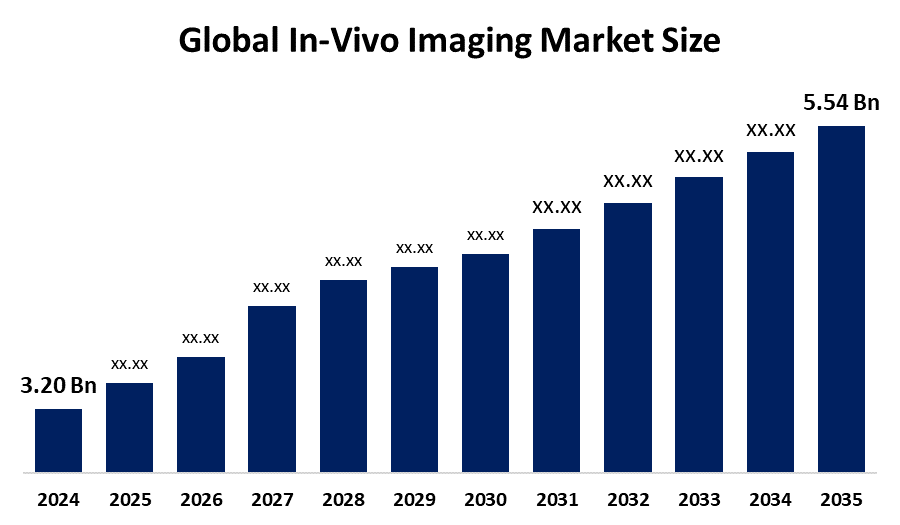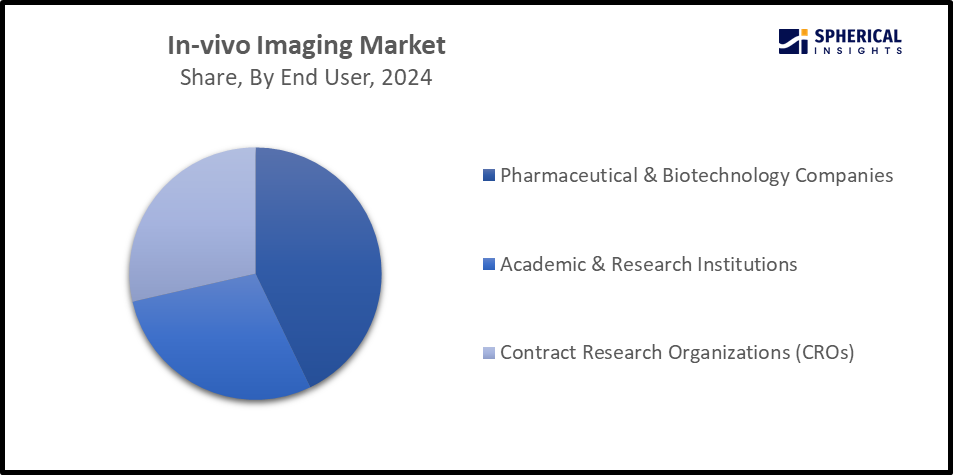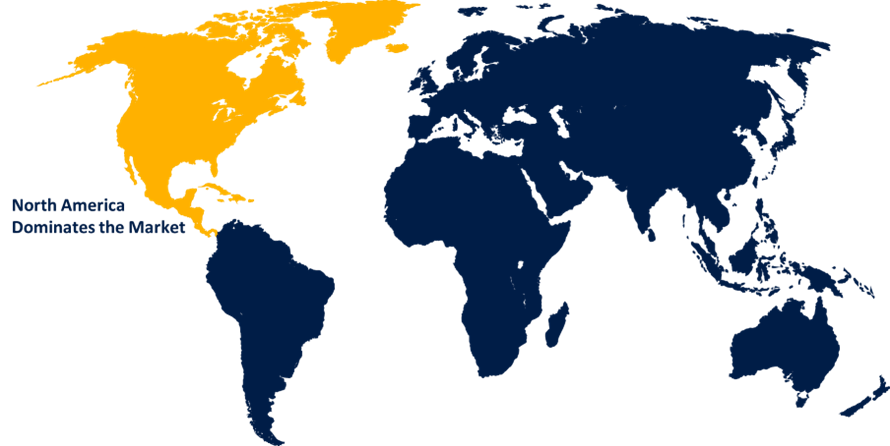Global In-Vivo Imaging Market Size, Share, and COVID-19 Impact Analysis, By Technology (Magnetic Resonance Imaging, Digital Angiography, Ultrasound, Nuclear Imaging, and Others), By Application (Monitoring Drug Treatment Response, Bio Distribution Studies, Cancer Cell Detection, Biomarkers, and Others), By End User (Pharmaceutical & Biotechnology Companies, Academic & Research Institutions, and Contract Research Organizations (CROs)), and By Region (North America, Europe, Asia-Pacific, Latin America, Middle East, and Africa), Analysis and Forecast 2025 - 2035
Industry: HealthcareGlobal In-Vivo Imaging Market Insights Forecasts to 2035
- The Global In-Vivo Imaging Market Size Was Estimated at USD 3.20 Billion in 2024
- The Market Size is Expected to Grow at a CAGR of around 5.12% from 2025 to 2035
- The Worldwide In-Vivo Imaging Market Size is Expected to Reach USD 5.54 Billion by 2035
- Asia Pacific is expected to grow the fastest during the forecast period.

Get more details on this report -
According to a research report published by Spherical Insights and Consulting, The Global In-Vivo Imaging Market Size was worth around USD 3.20 Billion in 2024 and is predicted to grow to around USD 5.54 Billion by 2035 with a compound annual growth rate (CAGR) of 5.12% from 2025 and 2035. The market for In-vivo imaging has a number of opportunities to grow due to an increasing demand in research & development activities in the field of biology, medicine, and chemistry.
Market Overview
The global industry of in-vivo imaging encompasses the technologies and systems for non-invasively visualizing and studying biological processes within living organisms, primarily for drug development, disease research, and clinical diagnostics. In vivo imaging aids in observing anatomical structures, molecular/cellular activities, and metabolic functions as they occur more naturally within whole organisms. With the growing preference towards precision medicine, molecular imaging plays a key role as companion diagnostics, which ultimately drives the need for in vivo imaging for use in combination with nuclear and optical imaging.
Innovation and market expansion are anticipated as a result of growing R&D expenditures in the areas of oncology, neurology, and immunology by the pharmaceutical companies, biotechnology firms, and academic institutions for exploring new treatments for various diseases. For instance, it was estimated that in the year 2019, the pharmaceutical industry spent $83 billion on R&D and the number of new drugs approved for sale increased by 60% between 2010 and 2019. Increasing advancements in real-time in-vivo imaging, along with advancements in imaging modalities, miniaturization of systems, and development of advanced image analysis software, are driving a huge surge in the global in-vivo imaging market.
Report Coverage
This research report categorizes the In-Vivo Imaging market based on various segments and regions, forecasts revenue growth, and analyzes trends in each submarket. The report analyses the key growth drivers, opportunities, and challenges influencing the in-vivo imaging market. Recent market developments and competitive strategies such as expansion, type launch, development, partnership, merger, and acquisition have been included to draw the competitive landscape in the market. The report strategically identifies and profiles the key market players and analyses their core competencies in each sub-segment of the in-vivo imaging market.
Global In-Vivo Imaging Market Report Coverage
| Report Coverage | Details |
|---|---|
| Base Year: | 2024 |
| Market Size in 2024: | USD 3.20 Billion |
| Forecast Period: | 2025-2035 |
| Forecast Period CAGR 2025-2035 : | 5.12% |
| 2035 Value Projection: | USD 5.54 Billion |
| Historical Data for: | 2020-2023 |
| No. of Pages: | 240 |
| Tables, Charts & Figures: | 126 |
| Segments covered: | By Technology, By Application, By End User and By Region |
| Companies covered:: | PerkinElmer Inc., Bruker, FUJIFILM Holdings America Corporation, Siemens, Miltenyi Biotec, CMR Naviscan, SCANCO Medical AG, Aspect Imaging Ltd., Mediso Ltd., LI-COR, Inc., Takara Bio Inc., MILabs B.V., MR Solutions, Trifoil Imaging, Biospace Lab, Others, and |
| Pitfalls & Challenges: | Covid-19 Empact, Challenges, Growth, Analysis. |
Get more details on this report -
Driving Factors
The worldwide in-vivo imaging market is driven by the increasing technological development in the in vivo imaging system. There is an increasing need for noninvasive small animal imaging techniques, along with the rapid advancements in healthcare services and technology. An increasing development of silica- and silicon-based multimodality imaging nanoprobes for use in image-guided drug delivery and the development of novel systems for diagnostic applications is driving the market growth. In addition, the increasing prevalence of chronic diseases like cancer, cardiovascular diseases, rheumatoid arthritis, neurological disorders, and other diseases is anticipated to drive the market demand for in-vivo imaging due to its widespread application in drug development.
Restraining Factors
The in-vivo imaging market is restricted by factors like increased implementation cost of sophisticated imaging systems, high maintenance costs, and low life span of accessories. Further, the increasing requirement for skilled professionals due to rapid technological advancements is challenging the market growth.
Market Segmentation
The in-vivo imaging market share is classified into technology, application, and end user.
- The magnetic resonance imaging segment accounted for the dominant market share in 2024, with a 26.7% share and is anticipated to grow at a significant CAGR during the forecast period.
Based on the technology, the in-vivo imaging market is divided into magnetic resonance imaging, digital angiography, ultrasound, nuclear imaging, and others. Among these, the magnetic resonance imaging segment accounted for the dominant market share in 2024, with a 26.7% share and is anticipated to grow at a significant CAGR during the forecast period. The segment includes the use of magnetic resonance imaging to noninvasively observe and monitor biological processes within living organisms, like detecting phagocytic cell activity in neuroinflammatory diseases, enhancing imaging sensitivity and providing insights into cellular behavior. The capacity of MRI to deliver high contrast images without ionizing radiation for repeated imaging in clinical and research settings is driving the market.
- The monitoring drug treatment response segment dominated the market with a 33.5% market share and is projected to grow at a substantial CAGR during the forecast period.
Based on the application, the in-vivo imaging market is divided into monitoring drug treatment response, bio distribution studies, cancer cell detection, biomarkers, and others. Among these, the monitoring drug treatment response segment dominated the market with a 33.5% market share and is projected to grow at a substantial CAGR during the forecast period. In vivo imaging in preclinical studies is impacting drug development via monitoring disease progression and therapeutic response in longitudinal studies, by using reagents including bioluminescent marker reporters and PET tracers. For instance, Aspect Imaging is a high-performance compact benchtop MRI imaging system for preclinical research, developed by the company Aspect Imaging. The growing demand for dynamic evaluation of therapeutic interventions in real time is driving the market in the monitoring drug treatment response segment.
- The pharmaceutical & biotechnology companies segment dominated the market with the largest share of 48.5% in 2024 and is projected to grow at a substantial CAGR during the forecast period.
Based on the end user, the in-vivo imaging market is divided into pharmaceutical & biotechnology companies, academic & research institutions, and contract research organizations (CROs). Among these, the pharmaceutical & biotechnology companies segment dominated the market with the largest share of 48.5% in 2024 and is projected to grow at a substantial CAGR during the forecast period. The segment includes the use of in vivo imaging for optimization of lead selection and accelerating preclinical validation. The pharmaceutical industry’s growing emphasis on efficient drug development, as well as increasing collaboration between academic institutions, pharmaceutical companies, and imaging technology providers, are contributing to driving market growth.

Get more details on this report -
Regional Segment Analysis of the In-Vivo Imaging Market
- North America (U.S., Canada, Mexico)
- Europe (Germany, France, U.K., Italy, Spain, Rest of Europe)
- Asia-Pacific (China, Japan, India, Rest of APAC)
- South America (Brazil and the Rest of South America)
- The Middle East and Africa (UAE, South Africa, Rest of MEA)
North America is anticipated to hold the largest share of the in-vivo imaging market over the predicted timeframe.

Get more details on this report -
North America is anticipated to hold the largest share of 40.5% share of the in-vivo imaging market over the predicted timeframe. The market ecosystem in North America is strong, with increasing R&D efforts and a preference towards projects that use non-invasive, high-resolution, and data-intensive methodologies. The demand for in-vivo imaging has been driven by the government-funded initiatives, expansion of contract research organisations & collaborative research. The US is leading the in-vivo imaging market in the region, significantly attributed to the presence of biotech and pharma organizations, federal research funding, and strong supply chain administration. Further, the continuous innovation in imaging technologies, drug development & cancer research, and strict regulations for approving advanced imaging systems are contributing to promoting the market growth.
Asia Pacific is expected to grow at a rapid CAGR in the in-vivo imaging market during the forecast period. The Asia Pacific area has a thriving market for in-vivo imaging, accounting for 22.6% share in the small animal imaging market, driven by increasing investments and funds by the key players and governments in countries like India and China. Due to their governments actively supporting improvement in healthcare infrastructure, nations like China, Japan, and South Korea have become major players in the market. With an increased demand for affordable treatment options, multinational companies are increasingly investing in the development of in-vivo imaging across developing economies like India and China. China accounts for a dominant share in the regional in-vivo imaging market, due to its increased biomedical research and emphasis on personalized medicine and regenerative therapies.
Competitive Analysis:
The report offers the appropriate analysis of the key organizations/companies involved within the in-vivo imaging market, along with a comparative evaluation primarily based on their type of offering, business overviews, geographic presence, enterprise strategies, segment market share, and SWOT analysis. The report also provides an elaborative analysis focusing on the current news and developments of the companies, which includes type development, innovations, joint ventures, partnerships, mergers & acquisitions, strategic alliances, and others. This allows for the evaluation of the overall competition within the market.
List of Key Companies
- PerkinElmer Inc.
- Bruker
- FUJIFILM Holdings America Corporation
- Siemens
- Miltenyi Biotec
- CMR Naviscan
- SCANCO Medical AG
- Aspect Imaging Ltd.
- Mediso Ltd.
- LI-COR, Inc.
- Takara Bio Inc.
- MILabs B.V.
- MR Solutions
- Trifoil Imaging
- Biospace Lab
- Others
Key Target Audience
- Market Players
- Investors
- End-users
- Government Authorities
- Consulting And Research Firm
- Venture capitalists
- Value-Added Resellers (VARs)
Recent Development
- In September 2025, Revvity, Inc., announced the launch of its Living Image Synergy AI multimodal analysis software for in vivo imaging researchers. The solution provides a unified platform with AI capabilities for seamless data analysis across optical, microCT, ultrasound, and other modalities, reducing data inconsistencies, streamlining workflows, increasing throughput, and enhancing reproducibility, all with the intention of accelerating scientific discovery.
- In August 2023, SSM Health and Siemens Healthineers partnered to advance health equity and empower workforce development in underserved communities. Through a shared dedication to clinical and operational excellence, the partners would further enhance quality, efficiency, and access to diagnostic and imaging services for communities across SSM Health’s four-state service area, which includes Illinois, Missouri, Oklahoma, and Wisconsin.
- In April 2019, Invicro LLC, a Konica Minolta company and TheraMedical GmbH announced a unique partnership with the placement of the MSOT inVision platform in Invicro’s in vivo laboratory out of its Boston headquarters.
Market Segment
This study forecasts revenue at global, regional, and country levels from 2020 to 2035. Spherical Insights has segmented the in-vivo imaging market based on the below-mentioned segments:
Global In-Vivo Imaging Market, By Technology
- Magnetic Resonance Imaging
- Digital Angiography
- Ultrasound
- Nuclear Imaging
- Others
Global In-Vivo Imaging Market, By Application
- Monitoring Drug Treatment Response
- Bio Distribution Studies
- Cancer Cell Detection
- Biomarkers
- Others
Global In-Vivo Imaging Market, By End User
- Pharmaceutical & Biotechnology Companies
- Academic & Research Institutions
- Contract Research Organizations (CROs)
Global In-Vivo Imaging Market, By Regional Analysis
- North America
- US
- Canada
- Mexico
- Europe
- Germany
- UK
- France
- Italy
- Spain
- Russia
- Rest of Europe
- Asia Pacific
- China
- Japan
- India
- South Korea
- Australia
- Rest of Asia Pacific
- South America
- Brazil
- Argentina
- Rest of South America
- Middle East & Africa
- UAE
- Saudi Arabia
- Qatar
- South Africa
- Rest of the Middle East & Africa
Frequently Asked Questions (FAQ)
-
1. What is the CAGR of the in-vivo imaging market over the forecast period?The global in-vivo imaging market is projected to expand at a CAGR of 5.12% during the forecast period.
-
2. What is the market size of the in-vivo imaging market?The global in-vivo imaging market size is expected to grow from USD 3.20 Billion in 2024 to USD 5.54 Billion by 2035, at a CAGR of 5.12% during the forecast period 2025-2035.
-
3. Which region holds the largest share of the in-vivo imaging market?North America is anticipated to hold the largest share of the in-vivo imaging market over the predicted timeframe.
-
4. Who are the top companies operating in the Global In-vivo Imaging Market?Key players include PerkinElmer Inc., Bruker, FUJIFILM Holdings America Corporation, Siemens, Miltenyi Biotec, CMR Naviscan, SCANCO Medical AG, Aspect Imaging Ltd., Mediso Ltd., LI-COR, Inc., Takara Bio Inc., MILabs B.V., MR Solutions, Trifoil Imaging, and Biospace Lab.
-
5. Can you provide company profiles for the leading In-vivo imaging manufacturers?Yes. For example, PerkinElmer Inc. is a global technology leader driving growth and innovation in Health Sciences and Photonics markets to improve the quality of life, provides products and services for a range of applications that require innovation, precision and reliability. Bruker is an American manufacturer of scientific instruments for molecular and materials research, as well as for industrial and applied analysis.
-
6. What are the main drivers of growth in the in-vivo imaging market?The growing prevalence of chronic disease, investment in drug discovery & preclinical research, and technological advancements are major market growth drivers of the in-vivo imaging market.
-
7. What challenges are limiting the In-vivo imaging market?An increased cost of the in vivo imaging system and lack of skilled professionals remain key restraints in the in-vivo imaging market.
Need help to buy this report?